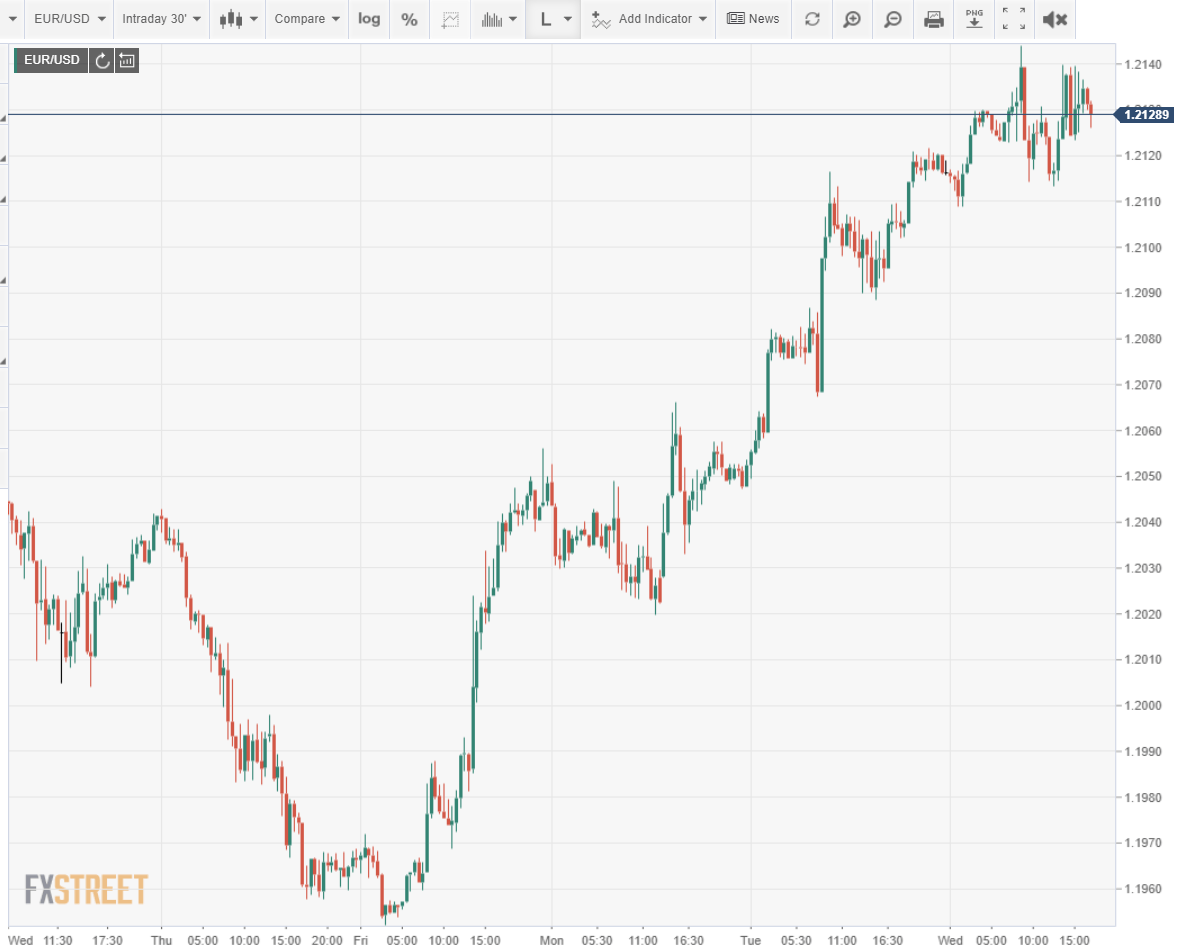- Annual Core CPI falls to 1.4%, a seven-month low in January.
- Headline CPI drops to 0.3% on the month, stable at 1.4% yearly.
- Poor holiday Retail Sales prompted January price markdowns.
Inflation in January gave no indication that consumer demand is helping to bolster prices as the core rate slipped to a seven-month low and the headline pace was unchanged.
The Consumer Price Index rose 0.3% in January as forecast following December's 0.4% increase. Annually, the rate was unchanged at 1.4%, just under the 1.5% prediction.
After falling to 0.1% in May 2020 and 0.6% in June from 2.4% in January and February, CPI has averaged 1.32% for the past six months with a 0.2% range from 1.2% to 1.4%.
Core CPI, excluding Food and Energy, was flat in January on a 0.2% forecast and a 0.1% gain in December. The annual rate rose 1.4% in January following December's 1.6% increase. The estimate was 1.5%. The six-month range for Core CPI has been 1.4% to 1.7%. The January and February 2020 rate was 2.35% and the six-month average is 1.6%. Last month's annual inflation was the lowest since June.
Core CPI, YoY
FXStreet
Retail Sales
Consumer demand slowed substantially in the fourth quarter as virus infections picked up in many parts of the country and California again shuttered its economy in December.
Retail Sales had recovered smartly from the spring economic closure rising more in May and June, 26.6%, than they has fallen in March and April, 22.9%.
After the replacement of the sales lost in the lockdown months sales averaged a healthy 1.03% in July, August and September.
However, in the final three month of the year that crashed into decline at -0.73%, including -1.05% for November and December holiday shopping season.
The January Retail Sales results will be reported by the Census Bureau on February 17 with 0.8% forecast for Sales and 0.4% for the Control Group after their 0.7% and 1.9% declines in December.
Retail Sales
Clearly the return of the pandemic and the renewed isolation had instilled a sense of caution in consumers despite the desire for cheer.
Inflation
Inflation's return has been more measured. Subsequent to the lockdown collapse in May and June when retailers were forced into drastic price cuts as consumers stopped shopping except for essentials, CPI has averaged 1.32% for six months, a bit over half (55%) its January and February rate of 2.4% and Core CPI has been 1.6% (68%) of its prior average of 2.35%.
The greater resilience of the core rate was because it did not collapse in the lockdown as the index was insulated from the plunge in food prices during and after the closure as retailers attempted to clear merchandise.
Conclusion and the dollar
Consumer prices in the New Year reflect the success or failure of the holiday season.
If retailers have unsold inventory they offer it at a discount in January. That was true this year with Retail Sales falling in November and December as parts of the nation revisited the unpleasantness of the spring and stores were forced to steep price reductions in January.
The currency market's view of the dollar is riding on the outlook for the US economy. Weak inflation is a reminder that consumer demand, upon which much depends, has not rebounded from its pandemic laced drop in the fourth quarter. Perhaps the January Retail Sales figures next week will provide reassurance.
Information on these pages contains forward-looking statements that involve risks and uncertainties. Markets and instruments profiled on this page are for informational purposes only and should not in any way come across as a recommendation to buy or sell in these assets. You should do your own thorough research before making any investment decisions. FXStreet does not in any way guarantee that this information is free from mistakes, errors, or material misstatements. It also does not guarantee that this information is of a timely nature. Investing in Open Markets involves a great deal of risk, including the loss of all or a portion of your investment, as well as emotional distress. All risks, losses and costs associated with investing, including total loss of principal, are your responsibility. The views and opinions expressed in this article are those of the authors and do not necessarily reflect the official policy or position of FXStreet nor its advertisers. The author will not be held responsible for information that is found at the end of links posted on this page.
If not otherwise explicitly mentioned in the body of the article, at the time of writing, the author has no position in any stock mentioned in this article and no business relationship with any company mentioned. The author has not received compensation for writing this article, other than from FXStreet.
FXStreet and the author do not provide personalized recommendations. The author makes no representations as to the accuracy, completeness, or suitability of this information. FXStreet and the author will not be liable for any errors, omissions or any losses, injuries or damages arising from this information and its display or use. Errors and omissions excepted.
The author and FXStreet are not registered investment advisors and nothing in this article is intended to be investment advice.
Recommended Content
Editors’ Picks

EUR/USD holds steady above 1.1400 ahead of key US data
EUR/USD struggles to gather recovery momentum but holds steady above 1.1400 on Wednesday following the mixed PMI data releases for the Eurozone and Germany. Markets await comments from central bankers and US PMI data.

GBP/USD stays weak near 1.3300 after disappointing UK data
GBP/USD stays under bearish pressure near 1.3300 on Wednesday. Pound Sterling is having a tough time attracting buyers following the weaker-than-forecast April PMI data from the UK. BoE Governor Bailey will speak later in the day and the US economic calendar will feature PMI reports.

Gold stabilizes above $3,000 after sharp decline on Trump's softer tone on trade and Fed
Gold stabilizes above $3,300 after correcting sharply from the all-time high it set et $3,500 early Tuesday. US President Donald Trump's softer tone on Fed Chairman Jerome Powell's position and trade relations with China seems to be discouraging buyers.

US S&P Global PMIs set to highlight worsening services and manufacturing sectors in April
Investors are bracing for a modest pullback in April’s flash Manufacturing PMI, expected to slip from 50.2 to 49.4, while the Services PMI is forecast to ease from 54.4 to 52.8.

Five fundamentals for the week: Traders confront the trade war, important surveys, key Fed speech Premium
Will the US strike a trade deal with Japan? That would be positive progress. However, recent developments are not that positive, and there's only one certainty: headlines will dominate markets. Fresh US economic data is also of interest.

The Best brokers to trade EUR/USD
SPONSORED Discover the top brokers for trading EUR/USD in 2025. Our list features brokers with competitive spreads, fast execution, and powerful platforms. Whether you're a beginner or an expert, find the right partner to navigate the dynamic Forex market.


